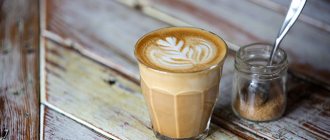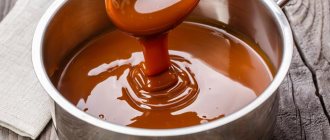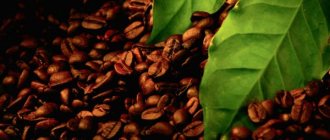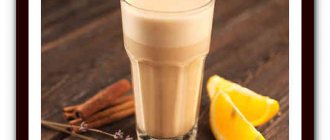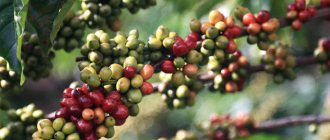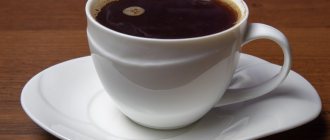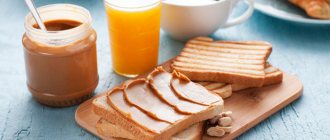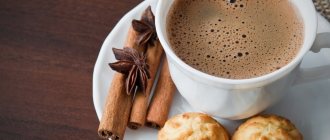Vienna is considered almost the world's "coffee capital", and its coffee shops are even included in the UNESCO list of intangible cultural heritage, with the note that this is "a place where space and time are wasted, and only coffee is included in the bill." Any coffee shop prepares such delicious drinks and cocktails that it is impossible to resist the aromas. You can make Viennese coffee at home using many interesting recipes. We tell you all about the features of this amazing drink, serving rules, calorie content and other important points.
The history of Viennese coffee
Coffee began to be prepared en masse in Austrian restaurants in the 17th century. A Ukrainian-Polish guy named Yuri Franz Kulchitsky helped the Austrians fall in love with the invigorating drink. He helped liberate the capital from the siege of the Ottoman Empire.
The first real coffee house was built in Vienna in 1685, at which time the country was safely liberated from Turkish troops.
Working undercover in Turkish lands, Franz fell in love with real strong coffee, which in the East has already become part of the culinary culture. Europeans in those days drank coffee only as prescribed by a doctor. They didn't really like the taste of the Turkish drink. Franz decided to cheat and came up with the idea of changing the composition, adding milk and honey to the coffee.
For his services to the Austrian state, Franz received a house as a reward, which he converted into a coffee shop. He called his establishment “The House under the Blue Bottle.” In the coffee shop, anyone could order a cup of Viennese drink and sweet pastries.
The establishment with the same name, where the drink is served, is located in Lviv. The surroundings and design of the coffee shop are made in the Austro-Hungarian style.
Yuri Franz Kulchitsky became the founder of the first coffee shop in Vienna. There is a second legend that tells how, after Austria’s victory over the Ottoman army, Yuri was given 300 bags of coffee beans as a reward. He began experimenting, adding honey, cream, and sugar to his coffee. This is how the legendary drink, known throughout the world, appeared. Another name for this drink is Melange.
With orange zest
What to prepare:
- hot coffee of any strength – 1 cup (but strong is better);
- whipped cream – 1-2 tbsp. l.;
- a pinch of chopped orange zest and cinnamon;
- sugar (optional);
- a pinch of nutmeg (optional).
How to cook:
- Pour freshly prepared coffee into warmed cups. Add sugar and mix. Place a dollop of whipped cream on top.
- Garnish with a sprinkle of finely chopped orange zest, ground cinnamon and a pinch of nutmeg.
Viennese coffee today
There is no specific traditional recipe for this drink, since different countries prepare it in their own way. Anyone can cook it and call it Viennese. But if you compare it with other coffee drinks, then its taste can be compared to honey Raf coffee. You can also find certain similarities with delicate Cappuccino and milky Latte.
One cup of Viennese drink contains from 170 to 180 kcal, depending on the sweet dope
Viennese is similar in strength to Latte. It also contains sugar and enough milk to give the drink a mild milky taste. It has a soft vanilla flavor and a delicate awakening coffee aroma. Thanks to heavy cream, it can satisfy your hunger for a while.
Nuances when choosing ingredients
To brew delicious coffee, it is not enough to find a successful recipe. It is necessary to select the best ingredients for the drink, and coffee beans play the most important role in this. It is important to consider several factors that affect taste:
- variety;
- country of origin;
- manufacturer;
- appearance;
- roasting
There are three types of coffee: Robusta, Arabica and Liberica. In our country, only the first two types are usually found on sale. Robusta is characterized by strong bitterness, sharpness and richness due to its high caffeine content. Arabica is sweeter, with subtle chocolate notes and a characteristic viscosity. Due to the fact that it is assembled by hand, its cost is much higher. Also, these varieties differ from each other in the size of the grains; Arabica has larger grains, 6-8 mm, while Robusta is somewhat smaller, up to 5 mm.
Depending on the country in which coffee is grown, its taste can vary significantly.
- Brazil - pronounced astringency and nutty aroma;
- Colombia - characteristic sourness and velvety taste of the drink;
- Guatemala - a hint of spice and a floral aftertaste;
- Kenya - berry notes combined with light sourness;
- Ethiopia - berry flavor, but more pronounced bitterness;
- India - bright chocolate taste.
The appearance of coffee beans can tell a lot to a knowledgeable person. To be able to evaluate them, it is preferable to purchase them in bulk rather than in ready-made packages. It is necessary to ensure that all grains are dry, free of any damage, small scratches or chips, and approximately the same in size. They should not shine, as this means that the valuable essential oils, which provide both the taste and aroma of coffee, have been oxidized by oxygen.
It is also worth paying special attention to roasting the beans. The taste of the future drink largely depends on it.
- Light, or Scandinavian, guarantees softness and tenderness. This drink is great to drink in the morning without adding milk or cream.
- Viennese roasting of coffee imparts a subtle sweetness and rich aroma, pairing well with almost any ingredient.
- Strong French makes the drink slightly bitter, rich and velvety.
- Italian roasting gives the most expressiveness, astringency and dark shade. This coffee is perfect for the middle of the day.
You might be interested in Frappe coffee recipes
When purchasing coffee beans, you can focus on the most well-known and reputable companies. Preference should be given to manufacturers from Germany, Finland, Switzerland and Italy. Among all European brands, the oldest and most reputable is Viennese coffee Julius Meinl.
The classic way to prepare Viennese coffee
It is advisable to grind the coffee before brewing, but if you don’t have a coffee grinder, you can purchase a ready-made ground version.
To properly prepare the Viennese drink, it is recommended to follow the step-by-step recipe. It is also important to prepare the ingredients in advance: buy natural 12% heavy cream and coffee beans.
Cooking time – 10 minutes.
Required kitchen equipment:
- small saucepan;
- tea spoon;
- coffee cup and saucer;
- blender.
Ingredients for 1 serving:
- 2 tsp. ground Arabica;
- 150 ml water;
- 50 ml cream;
- 1 tsp. granulated sugar.
Classic recipe:
- Whip the cream with a blender in a saucepan until it becomes a thick fluffy foam.
- Arabica beans are boiled in a pot, sugar is added to it, and mixed.
- Then pour it into the bowl. Spoon whipped cream on top of the drink. The drink is served hot to the table.
What will make the drink tastier?
Traditionally, the drink consists of espresso or black coffee, sugar and whipped cream. Let's look at some questions that may arise when preparing it.
- It is best to choose cream with a fat content of at least 30% and whip it yourself. Is it possible to use ready-made ones? – Yes, but it will be a completely different drink.
- When whipping cream, you can add a little vanillin to improve the taste.
- Sugar must be poured into freshly prepared coffee immediately, because the finished drink with the “cap” laid out cannot be stirred.
- Viennese coffee is also prepared with the addition of various liqueurs or strong alcohol, such as rum.
The question is often asked: should black coffee brewed according to all the classic rules in Turkish be filtered from the grounds or not? Reliable scientific research shows that grounds are “not competent” regarding a person’s future, but cause severe stomach irritation. Therefore, it is better to filter the predictor sediment.
Fans of calorie accounting will be wary of the calorie content of Viennese coffee. The average value of “coffee temptation” is about 250 kcal.
Step-by-step Viennese coffee recipes at home
Viennese coffee is quite easy to make at home yourself. Compared to Cappuccino and Flat White, where you need to prepare foam of a certain consistency, the Viennese version of the drink can be prepared even by someone who has never prepared these types of drinks.
How to make Viennese coffee with spices
Coffee can warm you up in the cold season thanks to the hot spices in its composition
. An interesting original version of the drink. Cooking time – 10 minutes.
Necessary utensils:
- Bowl;
- coffee cup and saucer;
- tea spoon;
- blender;
- Turk.
Products:
- 140 ml water;
- 60 ml cream 12%;
- 2 tsp. ground coffee beans;
- vanilla sugar 1 tsp;
- 2 black peppercorns;
- 2 carnation stars;
- half a cinnamon stick.
Step by step recipe:
- Ground grains are poured into the Turk. Add pepper, cinnamon and cloves to it.
- Cooked in the standard way. Pour it into a cup through a sieve.
- Whip the cream in a bowl using a blender.
- Spread a teaspoon of cream onto the surface. The drink is served hot.
Chocolate Viennese coffee
It will take no more than 15 minutes to create chocolate Viennese coffee.
Those with a sweet tooth will certainly appreciate this recipe for a Viennese coffee drink. It's easy to prepare if you have all the necessary ingredients in the kitchen.
Kitchen tools:
- Turk;
- immersion blender;
- tea spoon;
- soup plate;
- coffee cup and saucer;
- saucepan.
Ingredients:
- 120 ml water;
- 70 ml cream 11%;
- 35 g dark chocolate;
- 2 tsp. coffee;
- a pinch of cinnamon;
- 1 tsp. powdered sugar;
- 1 tsp. cocoa powder.
Cooking method:
- Pour 40 ml of cream into a bowl and add powdered sugar. Beat until the foam becomes thick and dense.
- Coffee is poured with cold water in a Turk and classic espresso is brewed.
- Melt the chocolate over low heat in a saucepan, pour in the remaining cream. Stir.
- Gradually pour the coffee into the chocolate, stirring the liquid constantly.
- Pour the prepared Viennese coffee into a cup and spread the cream evenly on top.
- Before serving, garnish with cocoa powder and sprinkle with cinnamon.
Black gold of Austria
The Viennese like to call their coffee black gold and want to be treated as such.
We present 5 recipes for true classics of Viennese coffee.
You can use them to develop your imagination for other different options.
Big or Small black (mocha)
großer Schwarzer (“großer Schwarzer” or “big black”, also known as großer Mokka, big Black/Mocha) – double mocha in a large cup.
kleiner Schwarzer (kleiner Schwarzer or “little black”, also known as kleiner Mokka, small Black/Mocha) – a simple mocha in a small cup.
The basis and therefore the most important basic structure for real Viennese coffee drinks. This is black coffee, i.e. without sugar and milk. Currently it is prepared using an espresso machine. However, if you want to enjoy it the traditional way, you should use a Karlsbader pitcher.
Karlsbader jug
Ingredients for 1 cup:
- up to 8 grams of ground coffee
- tamper weight:
- from -15 to 20 kg
- preparation time: -20 to 30 seconds
Viennese melange
Viennese melange
It is called the “Holy Grail” of Viennese coffees. Consists of mocha with warm milk, a little water and a milk foam hood. If you prefer to add whipped cream instead, the melange will turn into "Franciscan coffee".
Take medium roast coffee beans and milk with 2.5–3.2% fat content.
Ingredients:
- 50 ml coffee;
- 50 ml milk;
- 1 tsp. Sahara;
- cream, sugar, honey, cinnamon, cocoa powder, grated chocolate - to taste.
Cooking method:
- Brew coffee. Sweeten the coffee if desired.
- Whisk the milk. Pour coffee and milk into a heated cup or glass.
- Sprinkle the surface of the drink with cinnamon, cocoa powder or grated chocolate.
Zarenkaffee (Royal Coffee)
Royal coffee
Zarenkaffee (Royal coffee) - strong espresso under a cap of yolk whipped with sugar.
Perhaps the most unusual coffee feature on our list is the strong espresso, which is topped with a whipped and sweetened egg yolk shortly before serving.
Single horse
Cappuccino served with powdered sugar takes its name from a one-horse cart.
Einspänner - “Einspänner”. In the old days, a cart drawn by one horse was called that. It is not clear why, but coffee was also later called, which is a double espresso (but also mocha) with a lot of whipped cream, and cocoa on top of it. It is served in large transparent glasses.
Or there is such an explanation for the name of the drink: that is, it means “coachman”, so named because of the coachmen’s love for such coffee: they held the glass in one hand, the reins in the other, and the coffee remained hot for a long time under the thick cream.
Maria Theresia or Maria Teresa coffee
Maria Theresia coffee
The Empress of Viennese coffee is made from a large mocha with a dash of powdered sugar and whipped cream with orange zest.
It's a mocha with orange liqueur, whipped cream and colorful powdered sugar. The drink is named after the Austrian Empress Maria Theresa; she preferred coffee prepared according to this recipe.
Fiaker or fiacre
Fiaker
Fiaker is a large mocha in a glass with a lot of sugar and the addition of plum brandy or rum.
If you want to enjoy a shot of coffee, you should choose a fiaker. It consists of a large mocha with lots of sugar, 2ml butter or rum and a cherry on top.
How to prepare, serve and drink Viennese coffee
The Viennese drink has long earned the love of coffee lovers around the world. It is widespread outside of Europe. It is recommended to drink it while it is still warm. Reheating is not recommended, as the foam will lose its structure and mix into a homogeneous mass.
For those who like large portions, baristas advise doubling the amount of coffee, water and milk
The Viennese drink is especially popular in coffee shops when it’s cold outside. The ideal time for it is autumn-winter and early spring. It is usually served with sweet pastries: croissants, muffins.
In Moscow, the price per cup varies from 200 to 230 rubles. In the regions the cost is lower, up to 200 rubles. If you prepare the drink yourself, its cost will not exceed 50 rubles. Abroad, for example, in Austria, you can pay from 3 to 3.5 euros per serving. Find out also how coffee Frappuccino and coffee with cocoa are prepared.
